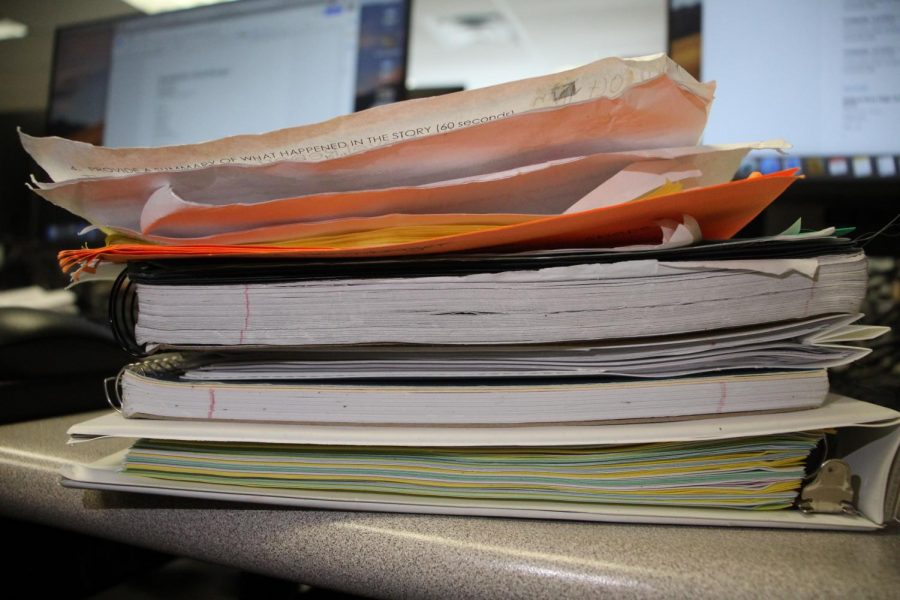Paper problem
Schools produce more paper and plastic waste than needed
On average, each one of us produces 4.4 pounds of solid waste each day. This adds up to almost a ton of trash per person, per year. If we cut this down even by half it would make a tremendous difference in the amount of paper waste made by schools. Cutting back on paper starts with smart decision making and taking responsibility for the environment.
October 11, 2019
Schools and other educational facilities are some of the leading producers of waste in most states and countries and they’re producing more waste than needed.
Schools have started to provide their students with personal computers, but they are still using an unprecedented amount of paper and plastic. Of course, schools are going to use paper, that is a fact, but at what point are we going to say that’s too much. According to the American Federation of Teachers or AFT at least 40% of the typical school waste stream is paper.
Not only is paper being wasted, but it is costing students money to print off their work when they can easily submit their work online. I am not suggesting we find a way to get rid of paper in school because that would be impossible. A simple suggestion would be to start acting smarter with our use of paper by going digital for assignments and certain tests.
If an assignment can be submitted online, shouldn’t we jump at the opportunity to do so? Not only would it be saving paper but it would also be ensuring that no assignment is lost or misplaced because everything is online. Teachers will argue that it is easier for them to have their students print off certain documents but they should be able to sacrifice their wants to help decrease the amount of paper being used.
When teachers plan on handing out work on paper they should first consider if it can be done online and if it would be easier to complete for the student. This thought process could lead teachers and other school officials in the right direction about how they use paper and when they could go digital. Paper isn’t the only resource schools are misusing, there is also plastic from pencils, pens, ink cartridges, etc.
Not only is there waste being produced in the classrooms, but also in the cafeteria. When students bring lunches from home they can easily produce a handful of trash without thinking twice. This includes things like plastic snack bags, chip bags, cans, etc. The AFT says that glass and plastic beverage containers account for about 15% of the school waste stream.
This factor is unsettling because it shows how easily people are producing waste without thinking about the effects it has on our environment.
The changes that can be made to prevent large amounts of waste from being produced are so simple and easy there shouldn’t be a struggle to comply. This would include things like bringing paper bags or reusable lunch boxes for lunch instead of plastic, or bringing a reusable water bottle to school which in turn is also saving your wallet.
According to Fusion Waste and Recycling, each ton of recycled paper can save 17 trees, 380 gallons of oil, three cubic yards of landfill space, 4,000 kilowatts of electricity and 7,000 gallons of water.
Schools like Oak Hills Elementary in California have a zero waste tolerance, during lunch peers monitor the students throwing away trash to make sure everything that can be recycled is. Zero waste means that zero discards are sent to landfills and products are designed to be either recycled or reused.
Parents play a valuable role in the production of waste during lunch. For some students their parents pack their lunches, so to inform the parents about the waste they produce is just as important as informing the student body.
Saving the environment cannot be done in a day and will take society as a whole to make actually changes. By cutting back on the use of paper and plastic in schools would be pushing for the first steps to be taken to stop the production of unnecessary waste. By setting a good example and informing the community schools could create a big change in society.







